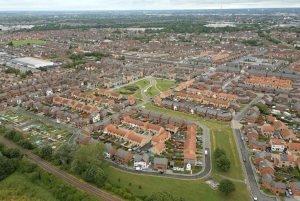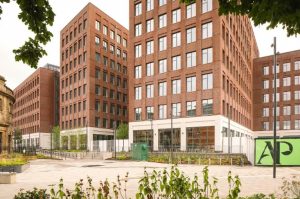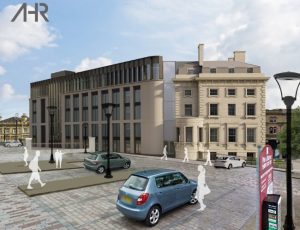Market View

Each week TheBusinessDesk.com asks experts from Yorkshire’s commercial property community for their views on a burning issue affecting the market.
This week’s question is:
Do you think lack of investment in Yorkshire’s transport infrastructure is holding back the commercial property market in Yorkshire?

“The commercial property market in Yorkshire’s cities has arguably been operating in the shadow of city centre apartment oversupply.
“Over the past decade commercial developments have been gradually forced towards the boundaries of Yorkshire’s hub cities, like Clarence Dock in Leeds. But even when taking into account office park areas on the outskirts of cities there’s still a chronic shortage of high quality commercial properties.
“Today’s commuters demand a web of quality transport links. So there’s an element of chicken and egg at the moment with end users not committing themselves as anchor tenants in these remoter areas because of the transport link difficulties, and private sector transport operators aren’t seeing sufficient demand to supplement supply yet – the Waterbus serving Clarence Dock has been delayed until the summer.
“The major economic centres are relatively well linked by longer distance train networks but this has a void left within the inner shell of these cities. Only Sheffield bucks this trend with its Supertram network serving the needs of the public and business communities inside of the city ‘walls’.
“The way forward for Yorkshire might be to look for public/private partnerships to open the purse for investment into transport links connecting these office parks with their city centres, and this may then, along with the readjustment of the residential market, bring the supply of top quality commercial space back into the heart of our cities.”

“Despite being well-recognised as Yorkshire’s economic capital and home to the second largest population of any metropolitan district in England, the amount invested in public transport in Leeds and the surrounding region is amongst the lowest in the country.
“The result? An over-stretched transport system and gridlocked roads to regularly rile the ever-expanding throng of commuters coming into the city. This is undoubtedly going to have a detrimental effect on the commercial property market if not properly addressed.
“Over the last few years, average office take-up in Leeds city centre has been consistently over 500,000 sq ft – enough to accommodate over 5,000 workers in the city each year.
“Of course, not all of the space taken brings in new jobs, but this level of activity does reflect the city’s consistent growth and will play some part in the mounting commuter load which is already putting so much pressure on our underperforming infrastructure.
“The danger we’re now facing is that a continued lack of improvement is no longer feasible – it will stifle the investment which the region’s property industry has been so successful in attracting, and this could leave us seriously lagging behind other regional centres which are more than ready to accommodate any fall-out.
“Transport remains a critical factor in the eyes of investors and a robust infrastructure is imperative if the city is going to be in a position to adequately support continued growth of any scale.

“Yes. A lack of an integrated strategy and sub-regional transport policies means Yorkshire’s property market is based on short-term thinking rather than long-term sustainability.
“More autonomy and greater powers for setting region-wide transport policy – as well as access to greater funds – would bring Yorkshire’s disparate bodies in line creating a lean operation to predict and react rapidly to changes and encourage even greater use of public transport.”

“I’m more of the opinion that commercial development in Yorkshire is progressing in spite of Yorkshire’s transport infrastructure.
“For the roads to improve, people need reasonable alternatives and to be encouraged to leave their cars at home. Whilst Sheffield has its trams and there’s an established park and ride in York, Leeds seems to be paying the price for the uncertainty on how to address the city’s transport issues.
“First there was the Supertram where every city centre planning applicant had to agree to pay a contribution to a system that never saw the light of day. This was then replaced by suggestions that Leeds would revert to trolleybuses, a traffic system which was last seen on our roads in the early 1970s.
“Thankfully, the businesses represented in the city are a fairly stoical and phlegmatic bunch, but Leeds does need a longer term solution. Arguably such indecision could hamper future growth which is not good for the city’s residents, nor for developers and their property agents seeking to promote Leeds in a wider marketplace.”

“There is no doubt that the lack of investment in Yorkshire’s transport infrastructure has held the region back, but the completion and opening of the East Leeds Link Road in October this year will go some way to redressing the balance.
“The opening of the £32.5m Link Road, which links Leeds city centre to Junction 45 of the M1, will transform the economic landscape of the city. It will revolutionise access between the city centre and Yorkshire’s motorway network and help to create an unrivalled business destination at Logic Leeds.
“Logic Leeds is a development by Leeds-base Muse, which will create 7,000 new and sustainable jobs. Muse has detailed planning permission for 1.6m sq ft of distribution and warehouse accommodation, supported by 40 acres of mixed-use space for a variety of operators.
“Generally the Yorkshire market as a whole has not suffered too badly because of the lack of investment thanks to fantastic converging motorway networks in the region. In fact the massive boom in distribution users in South Yorkshire in particular is down, partly at least, to good, congestion free (compared to the south), motorway networks.”








